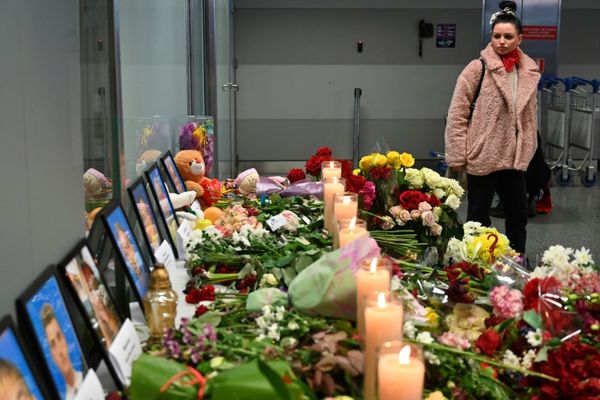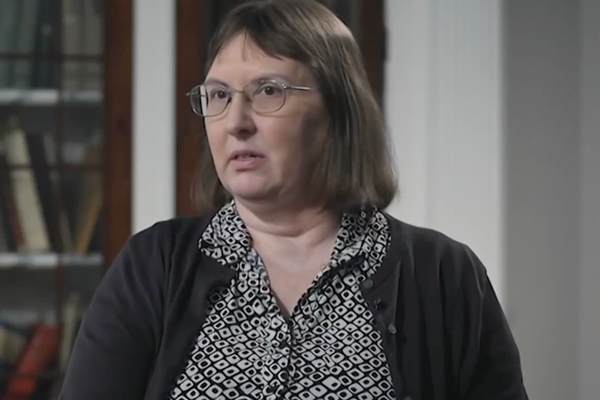
In the morass in which the Democratic party now finds itself over Joe Biden’s troubled presidential candidacy, a prominent narrative is that the party is confronted by two dire options: an aged and weakened Biden stumbles on to November, or he stands down, igniting an acrimonious and chaotic scramble for his replacement.
Either way, Donald Trump wins.
Over the past few days, however, energy has been building around a third, more optimistic solution. Advocates of this alternative model believe it could reinvigorate Democrats by putting the spotlight on young fresh talent, inspire the country with a powerful articulation of the party’s values and, critically, prevent Trump from returning to the White House bent on unleashing a full-blown attack on American democracy.
The idea is being floated by a loose affiliation of Democratic party stalwarts, including former senior government officials and elected representatives, major donors, and current party officeholders. They are calling their plan the “blitz primary”– a quickfire, tightly controlled selection process that would culminate with a younger successor to Biden being nominated at next month’s Democratic national convention.
“The question is: how can we flip this disaster into something remarkable?” said Ted Dintersmith, a venture capitalist and entrepreneur who is a leading proponent of the blitz primary idea. “What would totally shift the national narrative, turning bad options into an opportunity?”
Dintersmith, who in 2012 was appointed by Barack Obama to represent the US at the UN general assembly, estimates that about 70 prominent individuals have participated in the search for an alternative. Discussions have focused on how to move beyond the crisis in which the Democratic party has been propelled by Biden’s lamentable performance in last month’s presidential debate which has sown doubt both about the president’s mental acuity and his electability.
The blitz primary is posited on Biden voluntarily stepping down as the party’s nominee and playing an active role in the process. With his involvement, a shortlist of five to eight younger candidates would be identified, drawn from the Biden administration, Democratic state governors and other rising stars of the party.
Names mentioned include Vice-President Kamala Harris; Governors Gretchen Whitmer of Michigan, Gavin Newsom of California, and Andy Beshear of Kentucky; the US senator from Georgia, Raphael Warnock; and Biden cabinet members such as the commerce secretary, Gina Raimondo, and the transportation secretary, Pete Buttigieg.
A controversial aspect of the blitz primary model is that Harris would be required to compete on equal terms – there would be no anointing her as Biden’s heir. Allan Katz, the former US ambassador to Portugal under Obama who has helped frame the blueprint, said that if she emerged as the nominee she would do so “as a much stronger, much better candidate than if the nomination was just handed to her”.
The younger generation of leaders would be introduced to the nation through a series of televised town halls running up to the convention in Chicago on 19 August. Moderators would be selected for their dynamic ability to attract large primetime audiences especially of younger voters, snatching back the media limelight from Trump.
Oprah Winfrey, Michelle Obama, the historian Doris Kearns Goodwin, and even Taylor Swift have been floated as fantasy interlocutors.
“It would increase the number of Americans actually paying attention,” said Rosa Brooks, a key advocate of the blitz primary who held senior positions in both the Obama and Bill Clinton administrations and was a volunteer policy adviser for Biden’s 2020 campaign. She added: “For delegates it would be a chance for them to see how the candidates performed in front of the American people – because in the end this is about finding a candidate who is most likely to defeat Trump.”
Brooks pointed out that under party rules, if and when Biden agreed to withdraw he would release his 3,904 delegates who would then be free to pick a new nominee of their choice. Under the blitz primary formula, a vote would be staged before the Chicago convention to avoid the risk of an ugly and bruising spectacle at the event itself.
Selection would be by ranked choice voting. Delegates would vote only once, but list all candidates in order of preference.
Contenders would then be eliminated one by one, and their votes redistributed to those remaining, in a process that could be staggered over several days for maximum TV suspense and exposure. That would have the dual benefit of increasing public engagement, as well as ensuring that the final winner would have very broad appeal.
“It would be a riveting spectacle,” Brooks said. “It would be a way of getting people focused on the issue and the fact that the Democrats are not, in fact, a one-person party.”
Blitz primary advocates report that the model has proven to be popular among those they have tested it against. Brooks said that she has had private conversations with senior Biden administration officials who expressed support.
“People in very senior positions within the administration have said to us privately, ‘Thank you, we’re glad you’re doing this. We need Biden to withdraw and we need some better process,’” Brooks said.
The architects of the blitz primary have no illusions about how difficult it would be to achieve – not least because the entire plan rests upon Biden agreeing to quit the race. So far he has shown no sign of doing that, stating in interviews and an open letter that he intends to stick it out.
“It’s a very long shot, I know, as there are a whole bunch of things that have to line up,” Dintersmith said. “But our party is bursting with creative talent, and we have the ability to transform the election, energize the country, and come out of this in a better place as a nation than we are today.”
Brooks said: “We are up against a failure of imagination and courage – a failure to see that there are other possibilities if we are willing to move quickly and be creative. There are risks associated with that, of course, but there is a huge risk with the current approach – the risk of an autocrat determined to destroy democracy getting back into the White House.”







